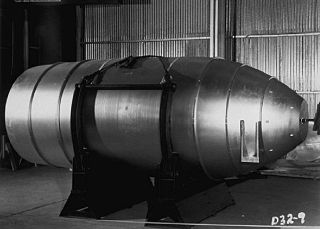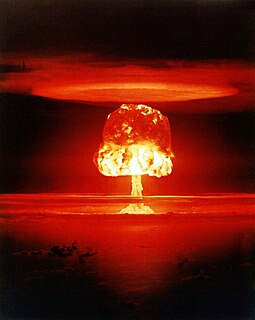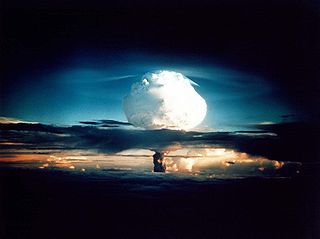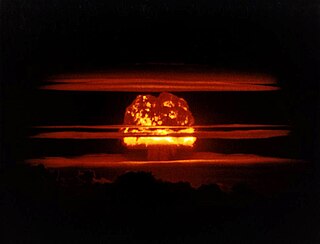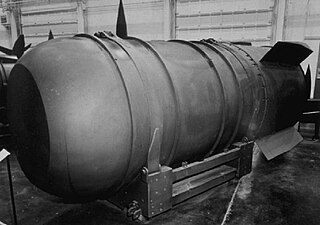The Mark 16 nuclear bomb was a large thermonuclear bomb (hydrogen bomb), based on the design of the Ivy Mike, the first thermonuclear device ever test fired. The Mark 16 is more properly designated TX-16/EC-16 as it only existed in Experimental/Emergency Capability (EC) versions.
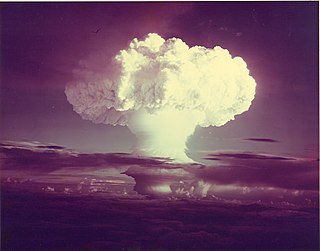
Ivy Mike was the codename given to the first test of a full-scale thermonuclear device, in which part of the explosive yield comes from nuclear fusion. It was detonated on November 1, 1952 by the United States on the island of Elugelab in Enewetak Atoll, in the Pacific Ocean, as part of Operation Ivy. It was the first full test of the Teller–Ulam design, a staged fusion device.
Contents
The TX-16 was the only deployed thermonuclear bomb which used a cryogenic liquid deuterium fusion fuel, the same fuel used in the Ivy Mike test device. The TX-16 was a weaponized version of the Ivy Mike design. This required both a considerable reduction in weight of the explosive package and the replacement of the elaborate cryogenic system with vacuum flasks for replenishing boiled-off deuterium. The carrier aircraft was to be the B-36 as modified under Operation Barroom. Only one B-36 was so modified. The TX-16 shared common forward and aft casing sections with the TX-14 and TX-17/24 and in the emergency capability (EC-16) version was almost indistinguishable from the EC-14. A small number of EC-16s were produced to provide a stop-gap thermonuclear weapon capability in response to the Russian nuclear weapons program. The TX-16 was scheduled to be tested as the Castle Yankee "Jughead" device until the overwhelming success of the Castle Bravo "Shrimp" test device rendered it obsolete.

Deuterium is one of two stable isotopes of hydrogen. The nucleus of a deuterium atom, called a deuteron, contains one proton and one neutron, whereas the far more common protium has no neutron in the nucleus. Deuterium has a natural abundance in Earth's oceans of about one atom in 6420 of hydrogen. Thus deuterium accounts for approximately 0.02% of all the naturally occurring hydrogen in the oceans, while protium accounts for more than 99.98%. The abundance of deuterium changes slightly from one kind of natural water to another.
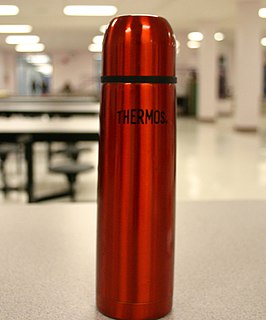
A vacuum flask is an insulating storage vessel that greatly lengthens the time over which its contents remain hotter or cooler than the flask's surroundings. Invented by Sir James Dewar in 1892, the vacuum flask consists of two flasks, placed one within the other and joined at the neck. The gap between the two flasks is partially evacuated of air, creating a near-vacuum which significantly reduces heat transfer by conduction or convection.

Castle Yankee was the code name given to one of the tests in the Operation Castle series of American tests of thermonuclear bombs. It was originally intended as a test of a TX-16/EC-16 Jughead bomb, but the design became obsolete after the Castle Bravo test was successful. The test device was replaced with a TX-24/EC-24 Runt II bomb which was detonated on May 5, 1954, at Bikini Atoll. It released energy equivalent to 13.5 megatons of TNT, the second-largest yield ever in a U.S. fusion weapon test.
